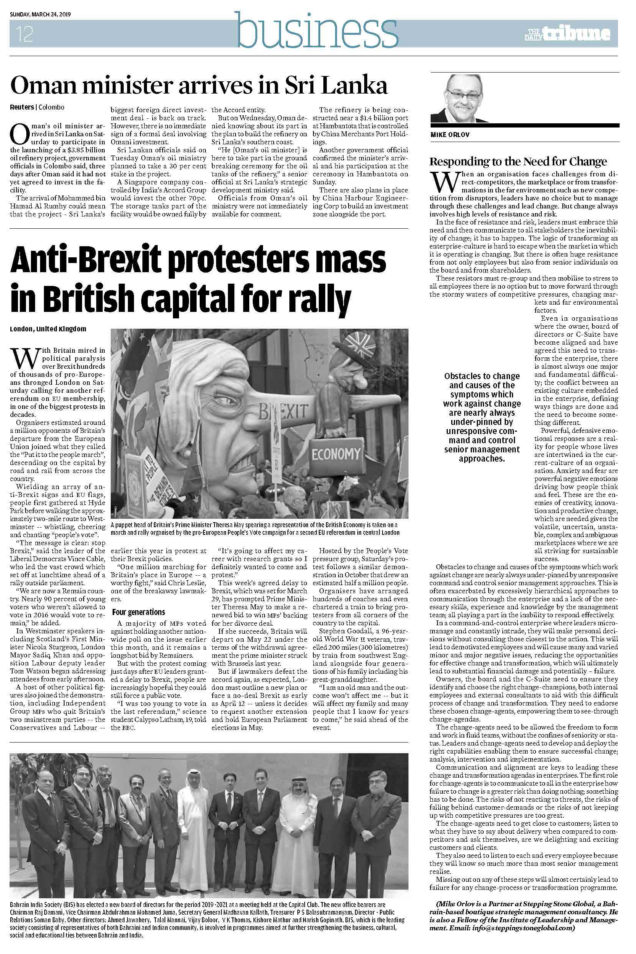When an organisation faces challenges from direct-competitors, the marketplace or from transformations in the far environment such as new competition from disruptors, leaders have no choice but to manage through these challenges and lead change. But change always involves high levels of resistance and risk.
In the face of resistance and risk, leaders must embrace this need and then communicate to all stakeholders the inevitability of change; it has to happen. The logic of transforming an enterprise-culture is hard to escape when the market in which it is operating is changing. But there is often huge resistance from not only employees but also from senior individuals on the board and from shareholders.
These resistors must re-group and then mobilise to stress to all employees there is no option but to move forward through the stormy waters of competitive pressures, changing markets and far environmental factors.
Even in organisations where the owner, board of directors or C-Suite have become aligned and have agreed this need to transform the enterprise, there is almost always one major and fundamental difficulty; the conflict between an existing culture embedded in the enterprise, defining ways things are done and the need to become something different.
Powerful, defensive emotional responses are a reality for people whose lives are intertwined in the current-culture of an organisation. Anxiety and fear are powerful negative emotions driving how people think and feel. These are the enemies of creativity, innovation and productive change, which are needed given the volatile, uncertain, unstable, complex and ambiguous marketplaces where we are all striving for sustainable success.
Obstacles to change and causes of the symptoms which work against change are nearly always under-pinned by unresponsive command and control senior management approaches. This is often exacerbated by excessively hierarchical approaches to communication through the enterprise and a lack of the necessary skills, experience and knowledge by the management team; all playing a part in the inability to respond effectively.
In a command-and-control enterprise where leaders micromanage and constantly intrude, they will make personal decisions without consulting those closest to the action. This will lead to demotivated employees and will cause many and varied minor and major negative issues, reducing the opportunities for effective change and transformation, which will ultimately lead to substantial financial damage and potentially – failure.
Owners, the board and the C-Suite need to ensure they identify and choose the right change-champions, both internal employees and external consultants to aid with this difficult process of change and transformation. They need to endorse these chosen change-agents, empowering them to see-through change-agendas.
The change-agents need to be allowed the freedom to form and work in fluid teams, without the confines of seniority or status. Leaders and change-agents need to develop and deploy the right capabilities enabling them to ensure successful change; analysis, intervention and implementation.
Communication and alignment are keys to leading these change and transformation agendas in enterprises. The first role for change-agents is to communicate to all in the enterprise how failure to change is a greater risk than doing nothing; something has to be done. The risks of not reacting to threats, the risks of falling behind customer-demands or the risks of not keeping up with competitive pressures are too great.
The change-agents need to get close to customers; listen to what they have to say about delivery when compared to competitors and ask themselves, are we delighting and exciting customers and clients.
They also need to listen to as many employees as possible because they will know so much more than most senior management realise.
Missing out on any of these steps will almost certainly lead to failure for any change-process or transformation programme.


